49th Parallel (film)
8.2 /10 1 Votes
88% Rotten Tomatoes Genre Drama, War, Thriller Language English | 7.5/10 IMDb Duration Country UK | |||||||||||||||||||||||||||||||||
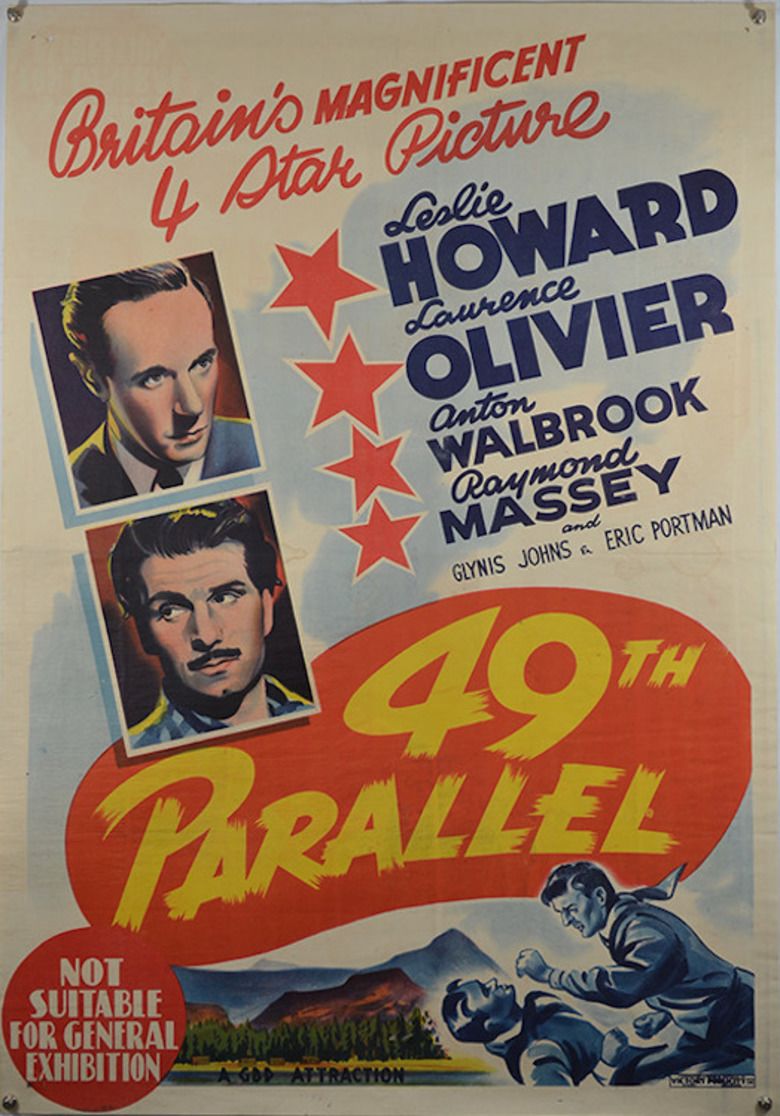 | ||||||||||||||||||||||||||||||||||
Release date 8 October 1941 (1941-10-08) Cast (Johnnie - the Trapper), Leslie Howard (Philip Armstrong Scott), (Lieutenant Hirth), (Lieutenant Kuhnecke), Richard George (Kommandant Bernsdorff), (Vogel)Similar movies Fury , Captain America: The First Avenger , Max Manus: Man of War , The Monuments Men , They Came to Blow Up America , The Boxer and Death | ||||||||||||||||||||||||||||||||||
49th parallel 1941 speech
49th Parallel is a 1941 British war drama film; it was the third film made by the British writer-director team of Michael Powell and Emeric Pressburger. It was released in the United States as The Invaders. Despite the title, no scene in the film is set at the 49th parallel, which forms much of the Canada–United States border. The only border scene is at Niagara Falls, which is further south.
Contents
- 49th parallel 1941 speech
- 49th parallel
- Plot
- Cast
- Production
- American release
- Continuity problems
- Reception
- Critical
- Box Office
- Awards
- References
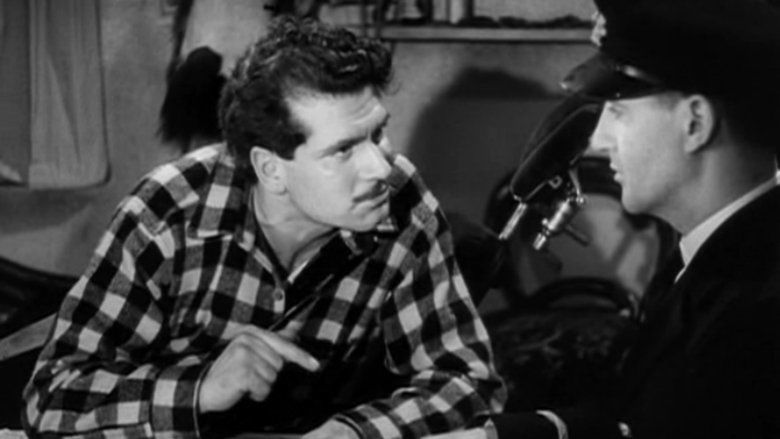
The British Ministry of Information approached Michael Powell to make a propaganda film for them, suggesting he make "a film about mine-sweeping". Instead, Powell decided to make a different film to help sway opinion in the neutral United States. Said Powell, "I hoped it might scare the pants off the Americans [and thus bring them into the war]". Screenwriter Emeric Pressburger remarked, "Goebbels considered himself an expert on propaganda, but I thought I'd show him a thing or two". After persuading the British and Canadian governments, Powell started location filming in 1940.
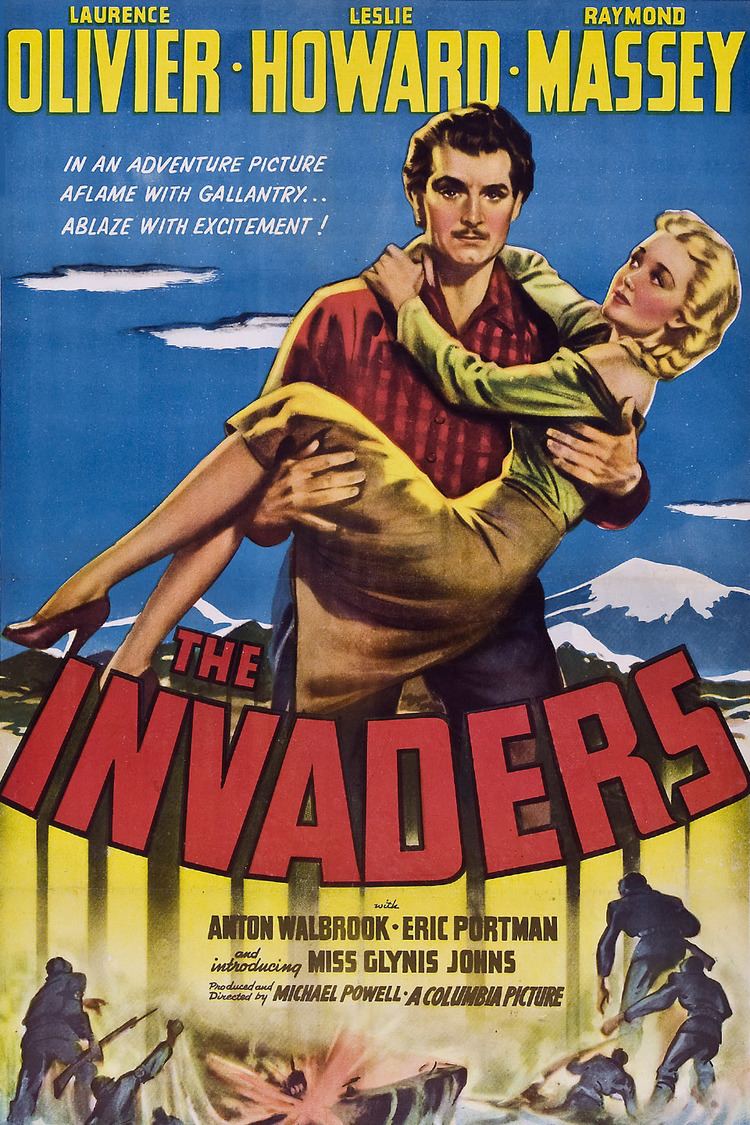
The original choice to play the German officer, Lieutenant Hirth, was Archers' stalwart Esmond Knight but he had joined the Royal Navy on the outbreak of war. Anton Walbrook as "Peter" donated half his fee to the International Red Cross. Raymond Massey, Laurence Olivier and Leslie Howard all agreed to work at half their normal fee, because they felt it was an important propaganda film. This is the only time that Canadian-born Massey played a Canadian on screen.
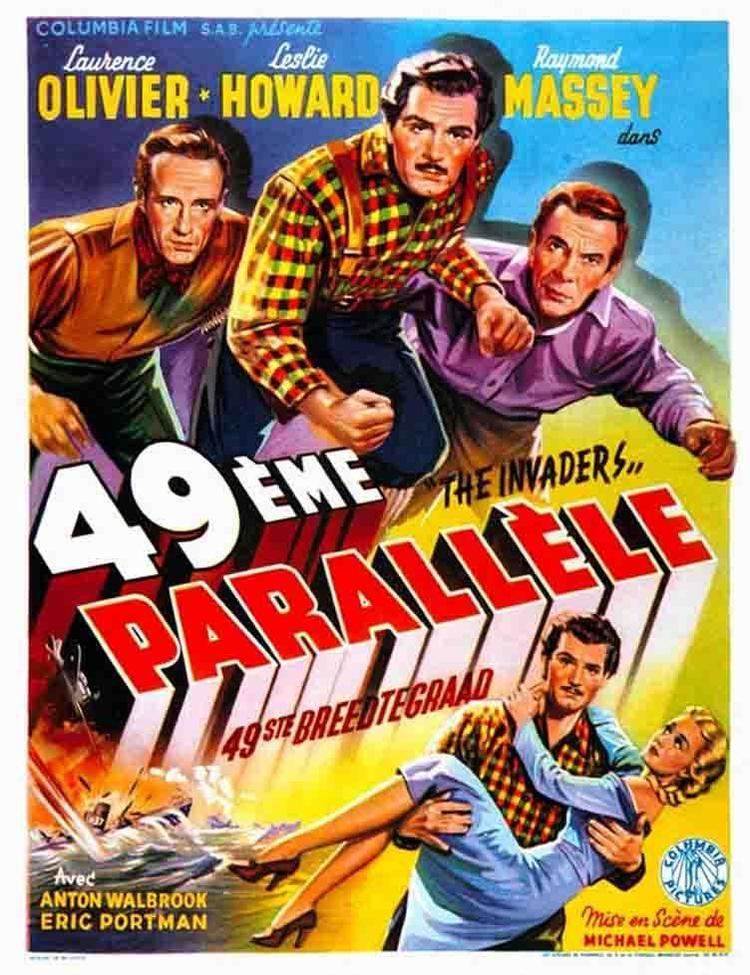
49th parallel
Plot
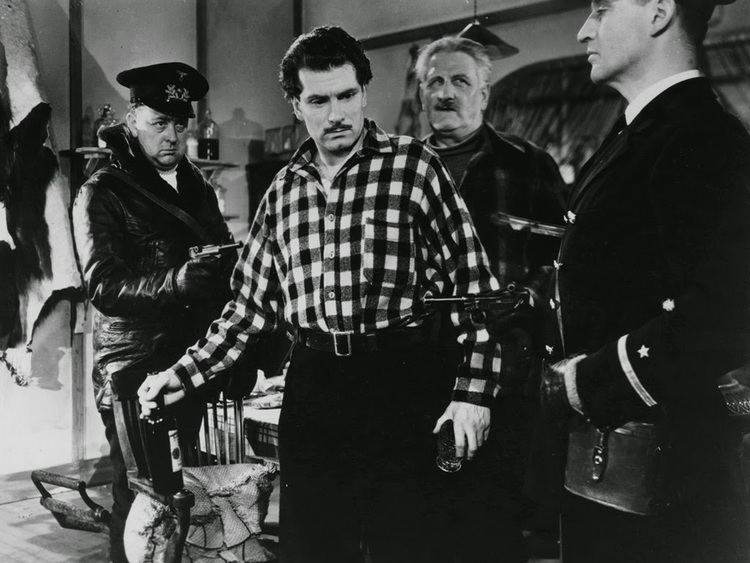
Early in the Second World War, U-37, a German U-boat, makes its way to Canadian waters and participates in fictional anti-shipping activities similar to those of the later Battle of the St. Lawrence. The U-boat evades RCN and RCAF patrols by moving north. A raiding party of six Nazi sailors are put ashore to obtain supplies but soon after, the U-boat is sunk in Hudson Bay by RCAF bombers. The six attempt to evade capture by travelling across Canada to reach the neutral United States and return to Germany.
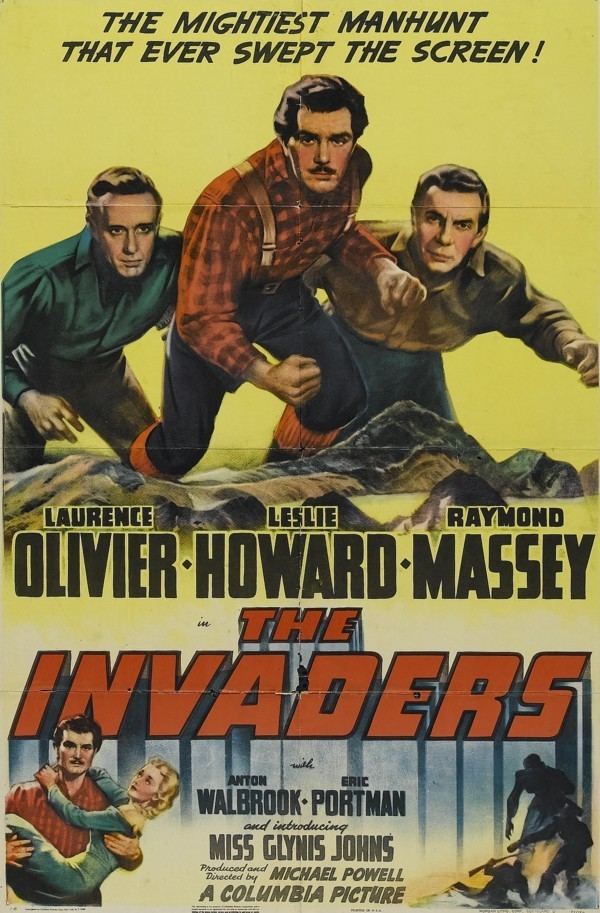
Led by Lieutenants Hirth (Eric Portman) and Kuhnecke (Raymond Lovell), the small band of sailors encounter and sometimes brutalise a wide range of people. The band steadily diminishes as one by one they are killed or captured. Initial victims of the Nazi sailors are the Eskimo Nick (Ley On) and a French-Canadian trapper (Laurence Olivier). When a floatplane is dispatched to investigate to reports of their arrival at a Hudson's Bay Company trading post, the Germans open fire, gunning down the pilot and some of the local Inuit. The Nazis steal the aircraft and take off to fly south, but not before one of the sailors is shot and killed by an Inuit.
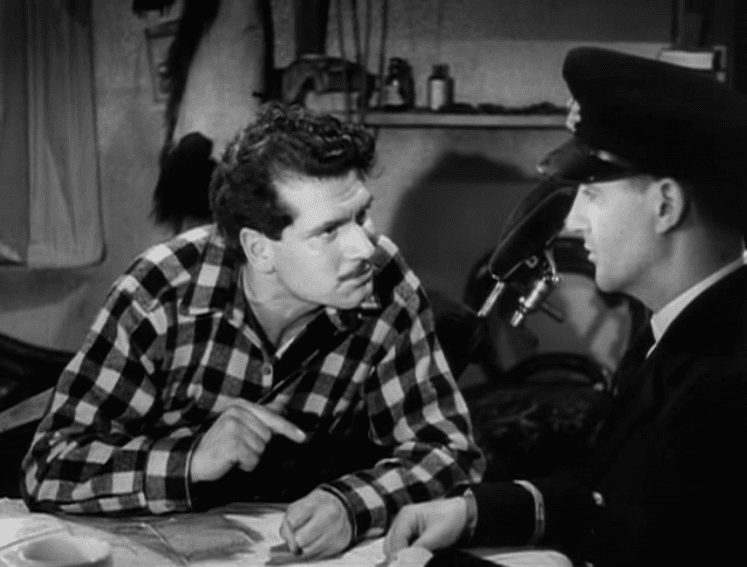
The floatplane runs out of fuel and crashes in a lake in Manitoba, killing Kuhnecke. The Germans encounter and are welcomed by a nearby Hutterite farming community. The Nazis assume them to be sympathetic to the German cause, but Hirth's fanatical speech is rejected by Peter (Anton Walbrook), the community's leader and even by one of the fugitives, Vogel (Niall MacGinnis), who comes to the aid of Anna (Glynis Johns), a teenage girl. Vogel, who would rather join the community and ply his trade of baker, is tried by Hirth and summarily executed for desertion.
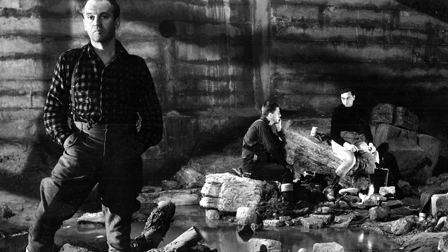
The dwindling band arrive in Winnipeg and sell some field glasses for food. Hearing that the police are watching the border, Hirth decides they will travel to Vancouver to catch a steamship for neutral Japan. Knocking out or murdering a motorist for his car, Hirth, Lohrmann and Kranz flee west, having killed eleven civilians in all. Kranz is arrested by Canadian Mounties at a parade at Banff, Alberta. The two remaining men try to walk across the Rockies. They are welcomed at a camp by a writer named Philip Armstrong Scott (Leslie Howard) who takes them for lost tourists, but they turn on him, destroying his books and paintings before fleeing. Scott and his men pursue them. Lohrmann finally rebels against Hirth's leadership, knocks him out and takes off by himself. Lohrmann is cornered in a cave. Scott is shot, but enters the cave and beats him up.
The story comes to a head with a confrontation between Hirth, the last fugitive and absent-without-leave Canadian soldier Andy Brock (Raymond Massey) on a baggage and express car of a Canadian National Railway train near the American border. When Hirth learns that the train has crossed into the United States at Niagara Falls, he surrenders his gun to a customs official and demands to be taken to the German embassy. Brock explains that Hirth is wanted in Canada for murder, but while the U.S. border guards are sympathetic to Brock's plea, they cannot find any official reason to send Hirth back. When Brock points out that Hirth is not listed on the freight manifest, the Americans are happy to use this pretext to send the car, along with Hirth and Brock, back to Canada as "improperly manifested cargo". The film ends with the train reversing to Canada and Brock about to pummel Hirth in the boxcar.
Cast
The U-Boat Crew
The Canadians
Production
Powell's interest in making a propaganda film set in Canada to aid the British war effort dovetailed with some of Pressburger's work. Although only a concept during pre-production, a screenplay began to be formulated based on Pressburger's idea to replicate the Ten Little Indians scenario of people being removed from a group, one by one. While Powell and Pressburger developed the screenplay, additional photography was assembled of the scope and breadth of Canada. All the opening "travelogue" footage was shot by Freddie Young with a hand-held camera out the windows of various aircraft, trains and automobiles on an initial trip across Canada.
The U-boat was built by Harry Roper of Halifax, Nova Scotia and towed to Corner Brook Newfoundland, where it was "shot down" by the Royal Canadian Air Force (RCAF) Lockheed Hudson bombers in the Strait of Belle Isle at the beginning of the film. Powell forgot that Newfoundland was at the time a Crown Colony, not a part of Canada. As a result, when they moved the full-sized submarine model there, it was impounded by Customs & Excise, which demanded that import duty be paid. Powell had to appeal to the Governor of Newfoundland, citing the film's contribution to the war effort.
The "U-37" carried two 1,000 lb bombs supplied by the RCAF. Powell did not tell the actors that they were aboard, as he thought that they might become nervous. The actors were replaced by dummies before the bombs were detonated. Michael Powell's voice can be heard faintly in some of the submarine scenes. Once, when the camera boat almost collides with the submarine, Powell says "Keep rolling." The men in the lifeboat at the start of the film were mainly local merchant seamen, many of whom had already been torpedoed.
One of the camera grips, Canadian teenager William Leslie Falardeau, also played an aviator on the rescue floatplane as it arrived at Cape Wolstenholme. In the film, he was shot and apparently killed by the Nazis before they commandeered the aircraft. A second role for him was as a double for Raymond Massey in a few scenes. Before the film was released, Falardeau became an RCAF pilot and was killed at age 19 in an aircraft accident in Britain.
Lovell nearly drowned in the scene where the commandeered floatplane crashes. Even those who could swim (which Lovell could not) became flustered when the aircraft sank faster than anticipated; the stink bomb that was thrown in to "heighten the turmoil" added greatly to the chaos. A member of the camera crew jumped in and saved the actor.
The Hutterites near Winnipeg allowed the film company into their community. Like the better known Amish, they live in simple, self-sufficient communities, leading an austere, strict lifestyle. Elisabeth Bergner was originally cast in the role of Anna. When a Hutterite woman saw Bergner painting her nails and smoking, she became so incensed that she rushed up, knocked the cigarette from the actress's mouth and slapped her in the face. Powell had to make peace with the community and with the outraged star. Bergner later deserted the film, refusing to come back to Britain for the studio scenes. It is believed that, as an ex-German national, she feared for her life if the Nazis were to invade. Glynis Johns stepped in to replace Bergner, a rare instance of an established star standing in for a lesser-known actress. The initial long shots of Anna are of Bergner. For the scene where the Hutterites listen to Eric Portman's impassioned pro-Nazi speech, the actors were all "hand picked faces". Over half were refugees from Hitler.
Notable crew members included David Lean as editor. Raymond Massey's brother Vincent Massey, then Canadian High Commissioner to the United Kingdom and future Governor General, read the prologue.
Arthur Horman did a week's uncredited work on the script in Montreal, writing the Laurence Olivier and Raymond Massey sequences. He later wrote Desperate Journey, which has a similar story.
Ralph Vaughan Williams provided the stirring music, his first film score. It was directed by Muir Mathieson and performed by the London Symphony Orchestra. Along with the credits for the actors before the title at the beginning of the film, there is a credit for 'The music of Ralph Vaughan Williams'.
The film was meant to cost £60,000 but ended up costing £120,000.
American release
The film was picked up by Columbia Pictures for a 1942 American release and retitled The Invaders. American censors cut 19 minutes from the film including the speech by the fanatical Nazi commander who claims that Eskimos are "sub-apes like Negroes, only one step above the Jews", which was removed to avoid offending segregationists in the American South. On the set of The Talk of the Town the American film trailer was made under the title It Happened One Noon. with stars Cary Grant, Jean Arthur and Ronald Colman telling director George Stevens about their seeing the exciting film during a two-hour lunch break.
Continuity problems
During the film's attack sequence in the Hudson Bay, the attacking RCAF bombers inexplicably change from Lockheed Hudsons to Douglas Digby aircraft in mid-scene.
A Western Canada Airways Fairchild 71 "CF-BJE" configured as a floatplane, is featured prominently in the Hudson Bay sequence. However, the commandeered floatplane that crashes into the lake bears the visible letters "CF-A".
At the conclusion of 49th Parallel, while trying to escape east to the United States at Niagara Falls, the train is supposedly travelling east, crossing the border bridge from Canada into the U.S, over the Niagara River, which flows from south to north. The bridge seen in the film resembles the Whirlpool Rapids Bridge. In actuality the train is shown travelling from the east to the west, from the US to Canada, as the camera (filming to the south) shows the river flowing from left (south) to right (north). Later, as the credits roll, the train is supposedly reversing west to Canada, yet the camera (again filming to the south) shows the train actually going from the west to the east, from Canada to the US, as the river again flows from left (south) to right (north).
Reception
By modern standards, the depiction of Canadians in 49th Parallel is stereotypical: brave Mounties, decorated Indians, Scottish-accented Hudson's Bay Company men and overwrought French-Canadians. Pressburger deliberately used the peaceful diversity of Canada to contrast with the fanatical world view of the Nazis. This world view was also played up to frighten American audiences to bring America into the war. The inclusion of Nazis as leading characters and its critique in spiritual terms rather than straightforward demonisation, are unusual for a British Second World War propaganda film. Powell and Pressburger returned to the theme in the more controversial The Life and Death of Colonel Blimp and to Anglo-American relations in A Matter of Life and Death and A Canterbury Tale.
Critical
Critical reviews of 49th Parallel were generally favourable, with the New York Times reviewer effusing, "Tense action... excellent performances. An absorbing and exciting film!" and Variety concluding: "This is an important and effective film. Opening scenes promise much, and it lives up to expectations. Every part, to the smallest bits, is magnificently played...." 49th Parallel holds a 88% approval rating on Rotten Tomatoes.
Box Office
The film was the most popular movie at the British box office in 1941. In the US, Universal turned the film down but it was bought by Columbia for distribution in North America for a reported $200,000. Variety estimated it earned $1.3 million in US rentals in 1942. The movie earned $5 million at the North American box office.
Awards
The film won Pressburger an Academy Award for Best Story and was nominated for Best Picture and Best Screenplay (including Rodney Ackland for additional dialogue). The British Film Institute ranked the film the 63rd most popular film with British audiences, based on cinema attendance of 9.3 million in the UK.
References
49th Parallel (film) Wikipedia49th Parallel (film) IMDb49th Parallel (film) Rotten Tomatoes49th Parallel (film) themoviedb.org
